Submitted by WA Contents
Safdie Architects creates giant urban oasis under vaulted glass roof for research and medical Center
Brazil Architecture News - Jul 15, 2022 - 15:20 8016 views

Moshe Safdie's firm Safdie Architects has created a giant urban oasis under a vaulted glass roof for a research and medical center in southern São Paulo, Brazil.
The skylit atrium with plenty of green infills and large courtyards form the heart of the new Albert Einstein Education and Research Center (AEERC), which will open to use in August.
The AEERC is one of Latin America’s most advanced institutions for medical research and study.
Located in the residential district of Morumbi, São Paulo, adjacent to the main Hospital Israelita Albert Einstein, the AEERC is the latest initiative of the premier Brazilian healthcare institute Sociedade Beneficente Israelita Brasileira Albert Einstein.
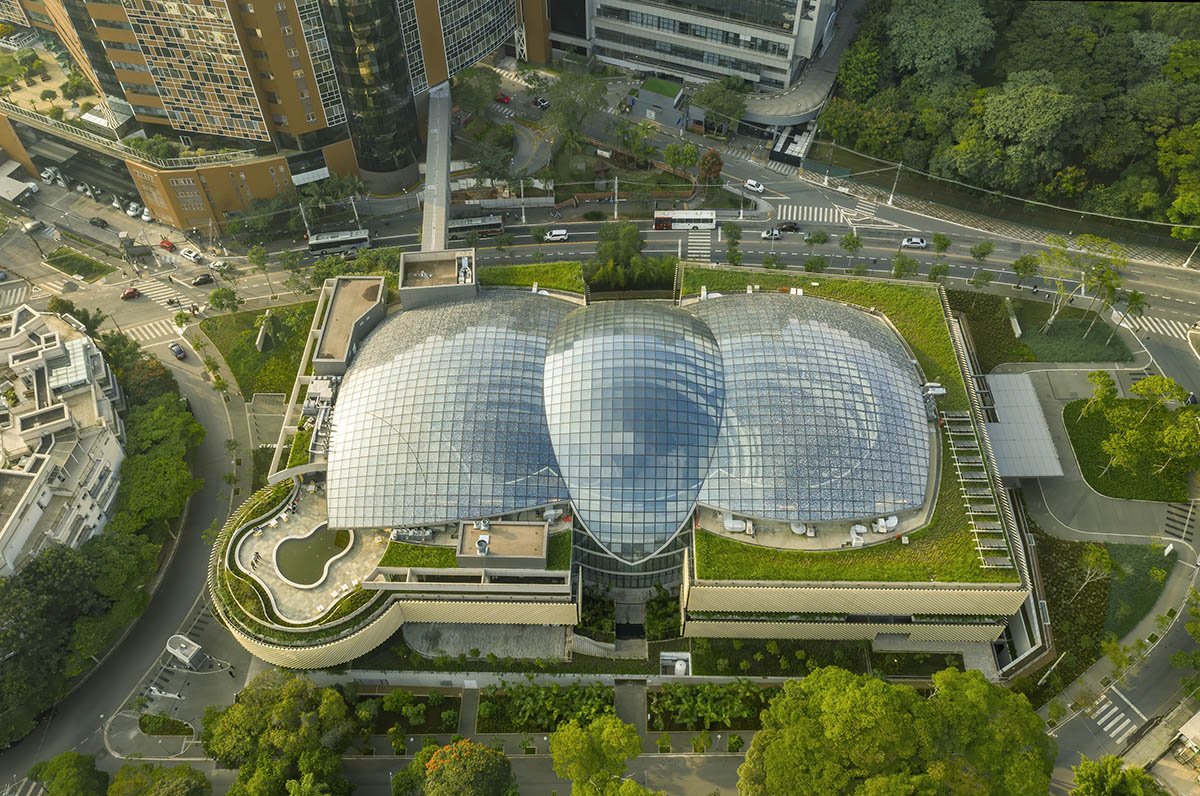
Recognized as the first medical school to be established by a private hospital in Brazil, the building is envisioned as a landmark learning and research environment. Safdie's building is linked to the adjacent main Hospital Israelita Albert Einstein via a walkway bridge.
"The Center afforded us the opportunity of designing an enlightened space for learning and research, one where interactive exchange, and a strong connection to nature could foster the next generations of medical leaders," said Moshe Safdie.
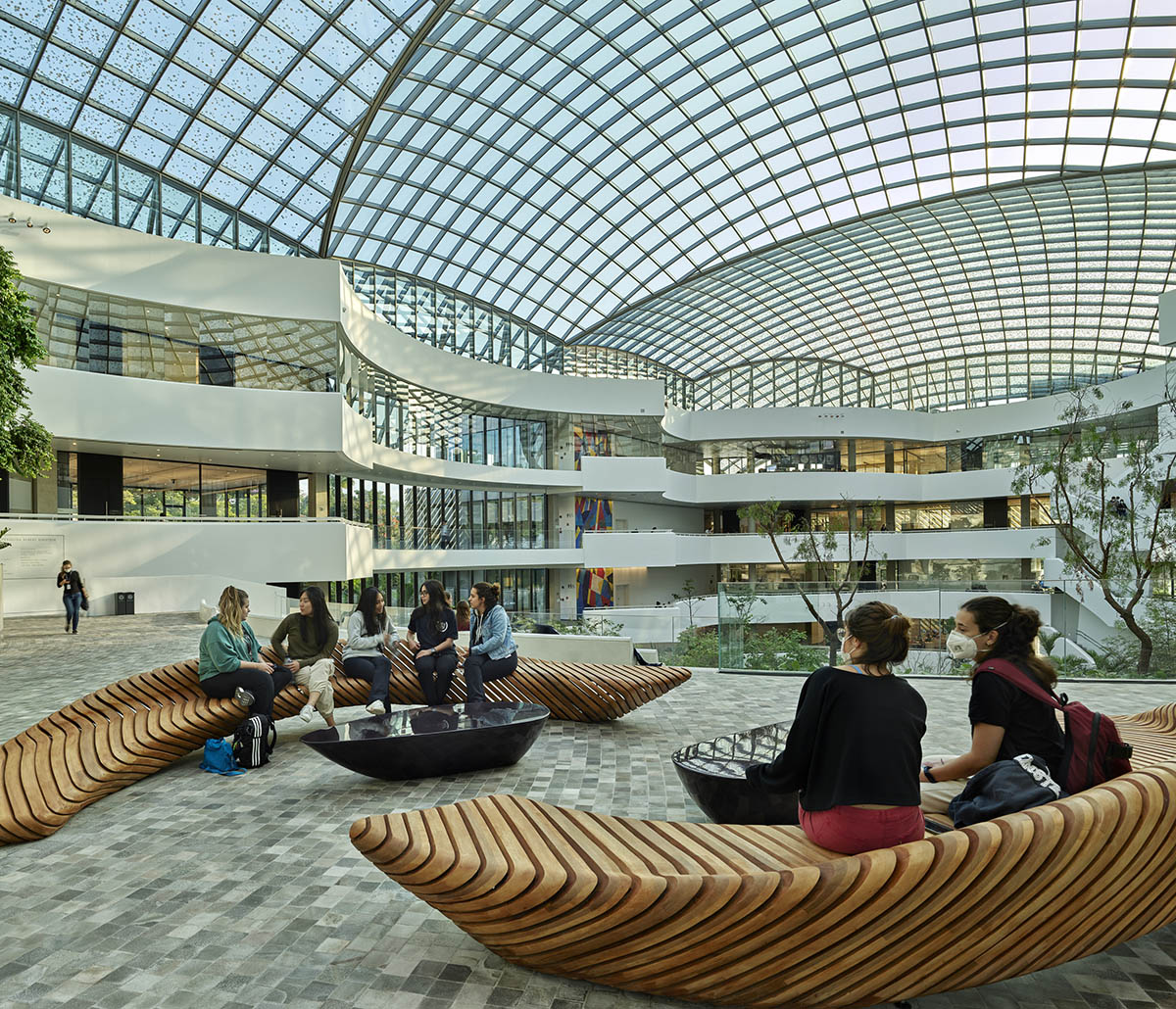
"The Center for Teaching and Research is the realization of a dream, the fulfillment of Einstein’s historic mission to be a great catalyst for transformations in society, making it increasingly healthy, humane, and just, based on education and science," said Dr. Sidney Klajner, Einstein’s president.
The 44,000-square-metre project was realized after an intense collaboration between the hospital and Safdie Architects, which was aimed to create an urban oasis and evoke a sense of calmness that offers a counterpoint to the activity of the city.
The building’s laboratory spaces, classrooms, and communal areas, organized around a vaulted, skylit atrium, are interwoven with nature and embody the unique character of the institution.

"Moshe Safdie and his partners have been our ideal collaborators—their designs are functional and beautiful," said Dr. Claudio Lottenberg, Einstein’s Deliberative Council President.
"They have designed a space for us that goes beyond meeting human needs to create an uplifting atmosphere that conveys the Center’s mission and aligns with our principles and values. This place reflects, body and soul, what Einstein is," Lottenberg added.
The spacious garden atrium becomes the physical and symbolic centerpiece of the building, which can be perceived as the protagonist of the project.
This massive atrium was envisioned to offer opportunities for spontaneous interaction, collaboration, and discovery, as well as repose and contemplation. According to the studio, the garden atrium acts as the community's living room, visible from almost every corner of the building.
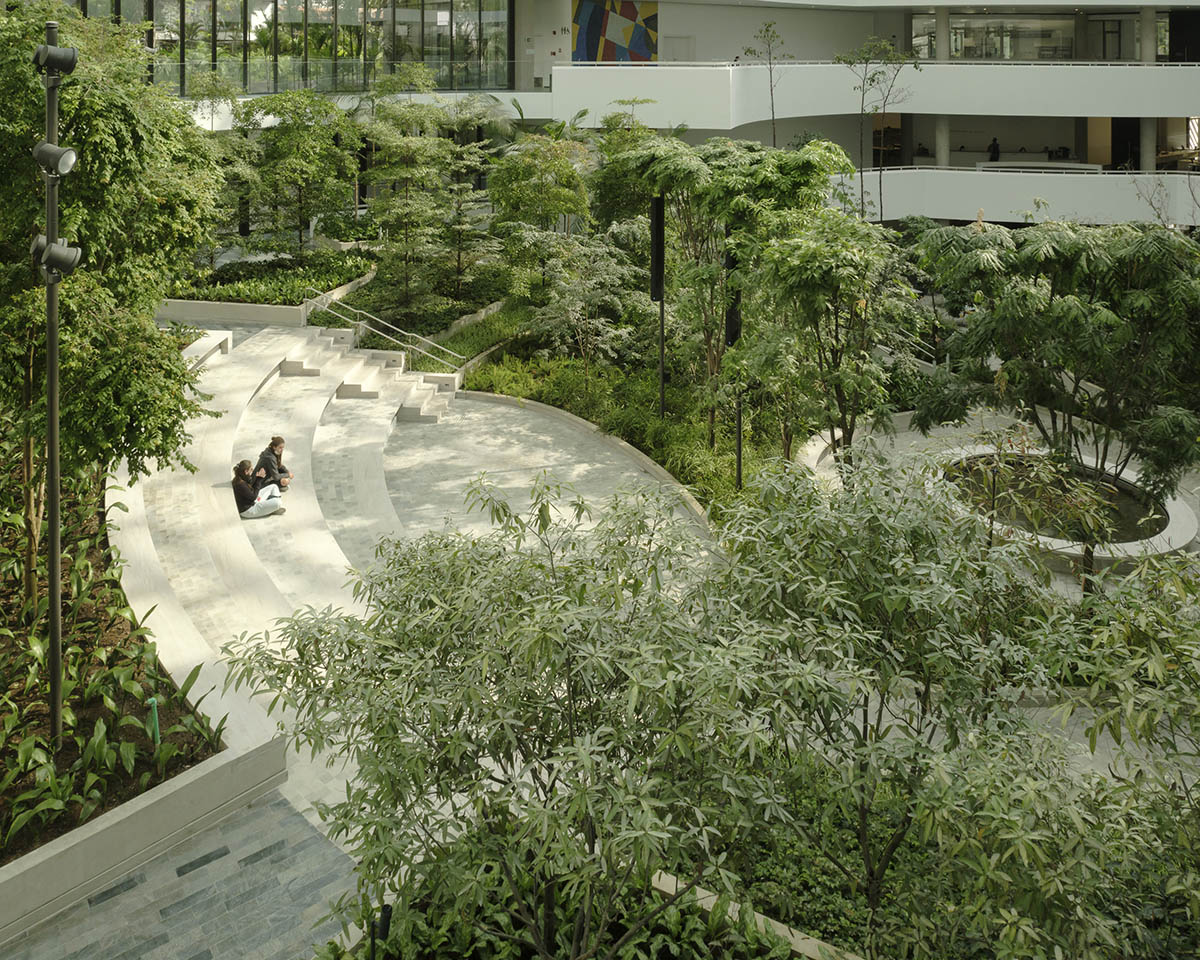
Image © Pedro Kok. Courtesy of Safdie Architects.
The studio added "a feeling of layering" to the atrium to direct the focus to the heart of the building and created stepped terraces that connect four main levels of activity. These terraces frame the core of the building in a sensitive and beautiful way.
While a restaurant is placed on the first floor, amphitheater and auditorium take place on the center levels, and exhibition/event space is designed on the fourth floor.
The garden atrium, lushly planted with native trees and planting and paved with local stone, was designed in collaboration with São-Paulo-based Isabel Duprat Landscape Architecture.
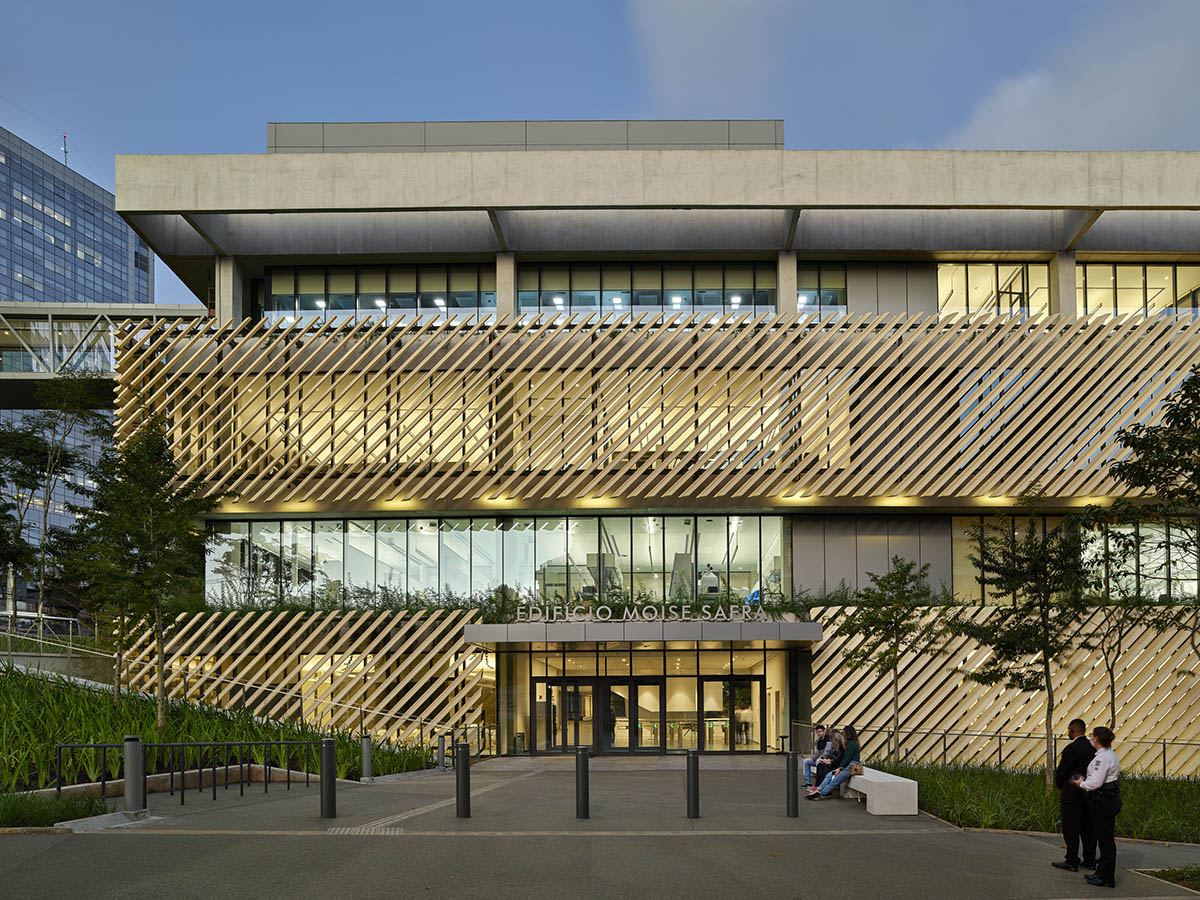
Safdie Architects designed the atrium’s vaulted glass roof structure with an innovative shading and daylighting system with a resulting visual effect to "evoke the feeling of congregating under a leafy tree."
To adapt to São Paulo’s variable climate, Safdie Architects worked with Seele, the specialty German sub-contractor and its local partners, to engineer the multilayered skylight system.
In the atrium's floors, the studio used the cobblestone which is local Quartzite, recalling paving found in São Paulo’s public parks like the Parque Trianon.
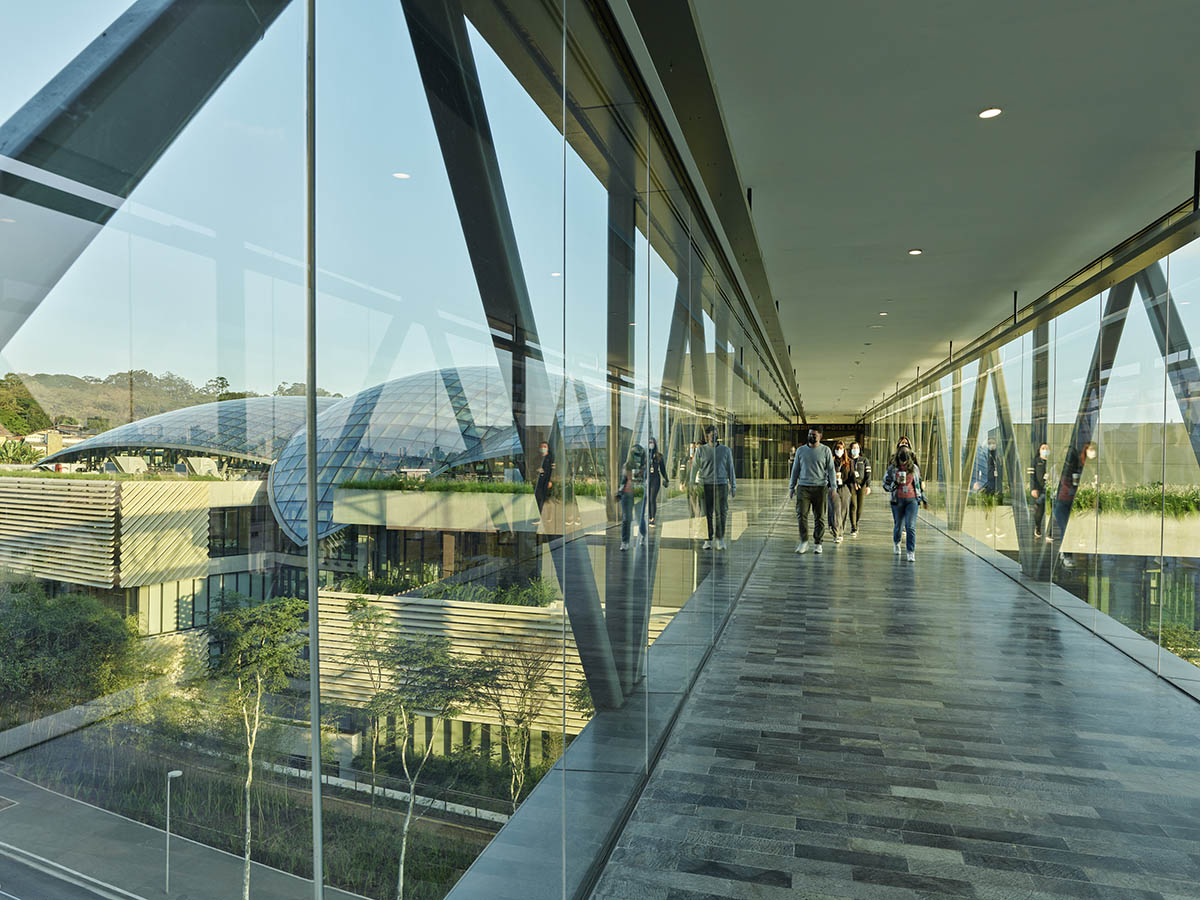
Several locally sourced species of wood were used in the project, including Jequitibá and Jatobá wood for the library and Cedro Rosso for the auditorium, according to the studio. For example, the Imbuia wood used to clad the elevator cores and for custom doors was hand selected from previously harvested lots.
On the other hand, natural rubber flooring was used in the classrooms and labs, in five colors ranging from terracotta red to egg yolk yellow, one color per floor, to define a different character on each floor and help provide orientation.
Furniture pieces were locally sourced from Brazil and selected to be modular and mobile to serve the flexible and evolving learning and research program.
"The 3,800-square-meter glass roof is designed as three integrated structural domes, which act as a grid-shell to efficiently vault 86m+ with minimum structural steel weight. The roof is designed as an assembly of layers that filter sunlight, mitigate heat, and absorb sound," said Safdie Architects.
"The outer skylight is made up of 1,854 ultra-transparent glass panels, coated with triple-silver solar protection to reduce heat gain, and printed with a pattern of translucent ceramic dots to shade sunlight. The glass has minimal reflectivity to avoid disturbing exterior reflections," the studio added.
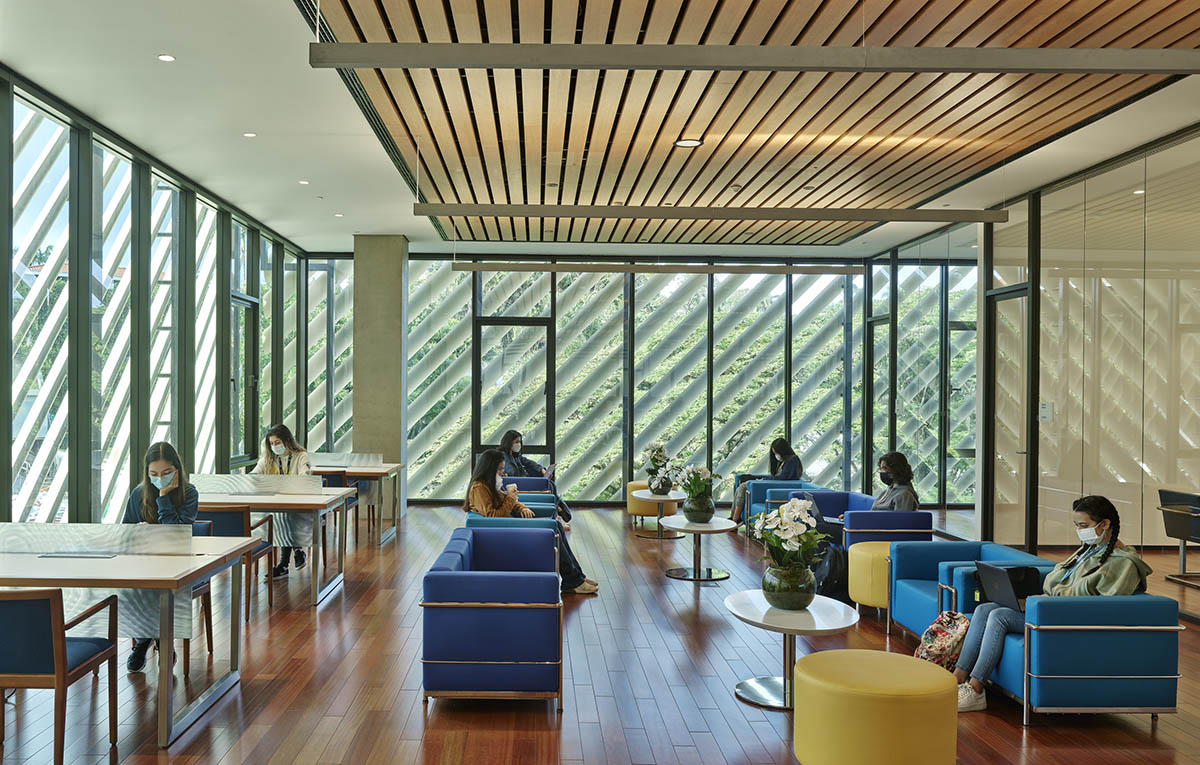
As the studio explained, the natural atrium environment was derived from an extensive computer modeling to balance three countervailing factors: "to provide ample daylight for the plants to thrive, to regulate heat gain and glare for human comfort and to provide shading by delicately filtering bright sunlight."
The vaulted roof features a bespoke printed frit pattern and solar protection coating, the glass roof’s design was instrumental in guiding the building towards achieving LEED Gold status, as the studio explained.
The Center is connected by two wings, which form the central atrium. The east wing of the Center contains the main teaching spaces, including education spaces for nursing, medicine, graduate programs, medical residency, and technical courses.
The West wing houses medical research facilities, including laboratories, clean rooms, and clinical research resources. Walkways bridge between the teaching and research wings and are punctuated by a series of intimate meeting and study spaces on each level of the Center.
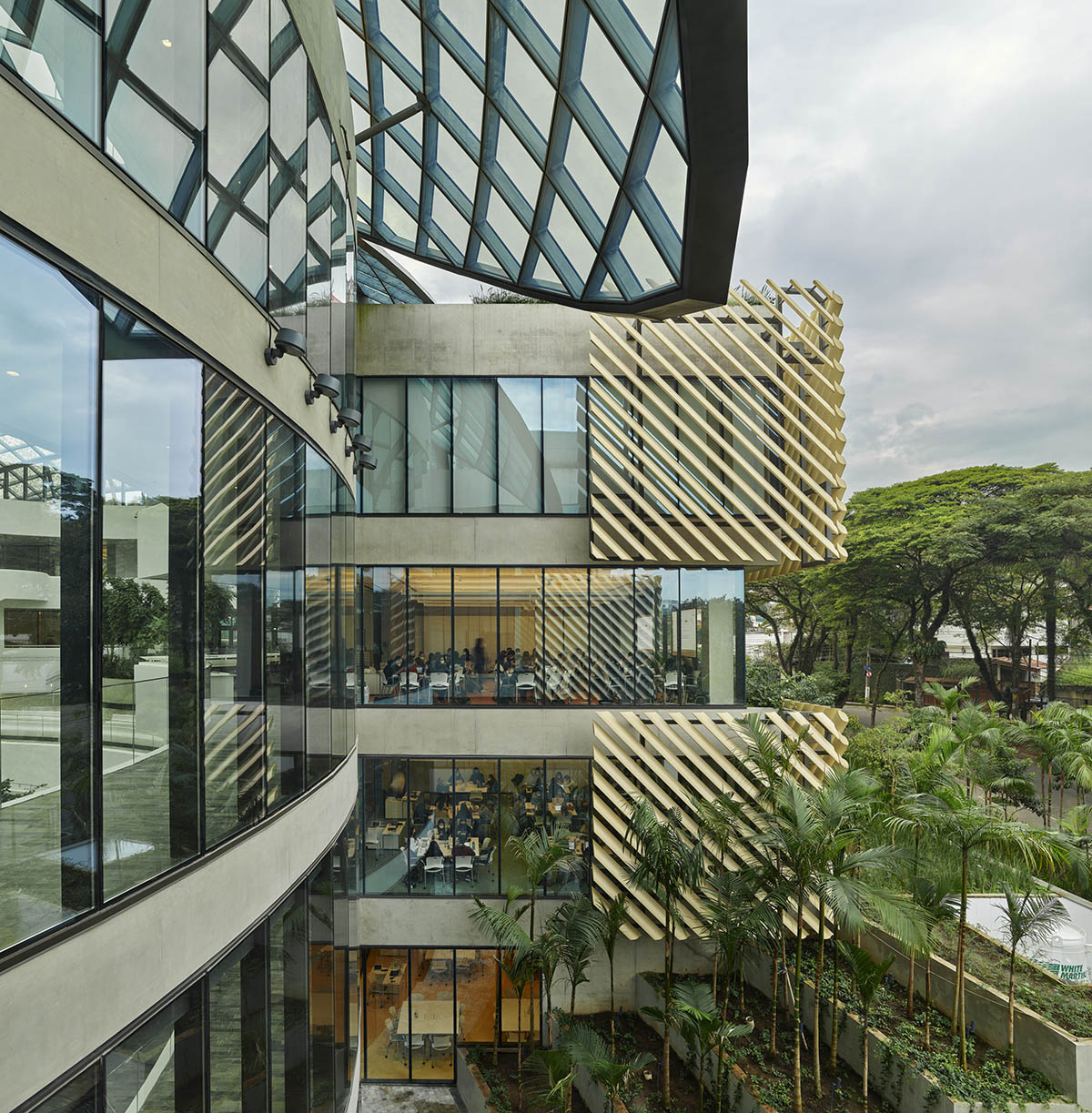
Embracing the sloping hillside, the building nestles itself into the site. Modulated by light and shadow, the exterior of the building steps in and out with full-height glass walls, extensively planted terraces, and shaded overhangs.
To mitigate the massive scale of the building, the studio used a louvered façade, acting as a brise soleil. Thanks to this façade system, it provides optimal light and shade to the interior classroom spaces. The louvers are oriented either diagonally or horizontally, depending on the orientation of each façade to the path of the sun.
"The airfoil shape of the louvers, as well as their angle and spacing, was developed using computer sun studies, tested with full scale physical models," said Safdie Architects.
The Center is directly connected to the facilities and resources of the Einstein main hospital complex via a pedestrian bridge over Padre Lebret Avenue.

"While the exterior is scaled to be discrete, the spacious multilevel garden at the heart of the Center feels like an unexpected discovery: bright, inviting, and inspiring. The environment we have created embodies the excitement of learning and research," said Sean Scensor, the project’s partner-in-charge for Safdie Architects.
For climate control inside, the studio implemented a sophisticated environmental control system to maintain a comfortable and healthy building environment, which was a key to the sustainability goals of the project, as the studio noted.
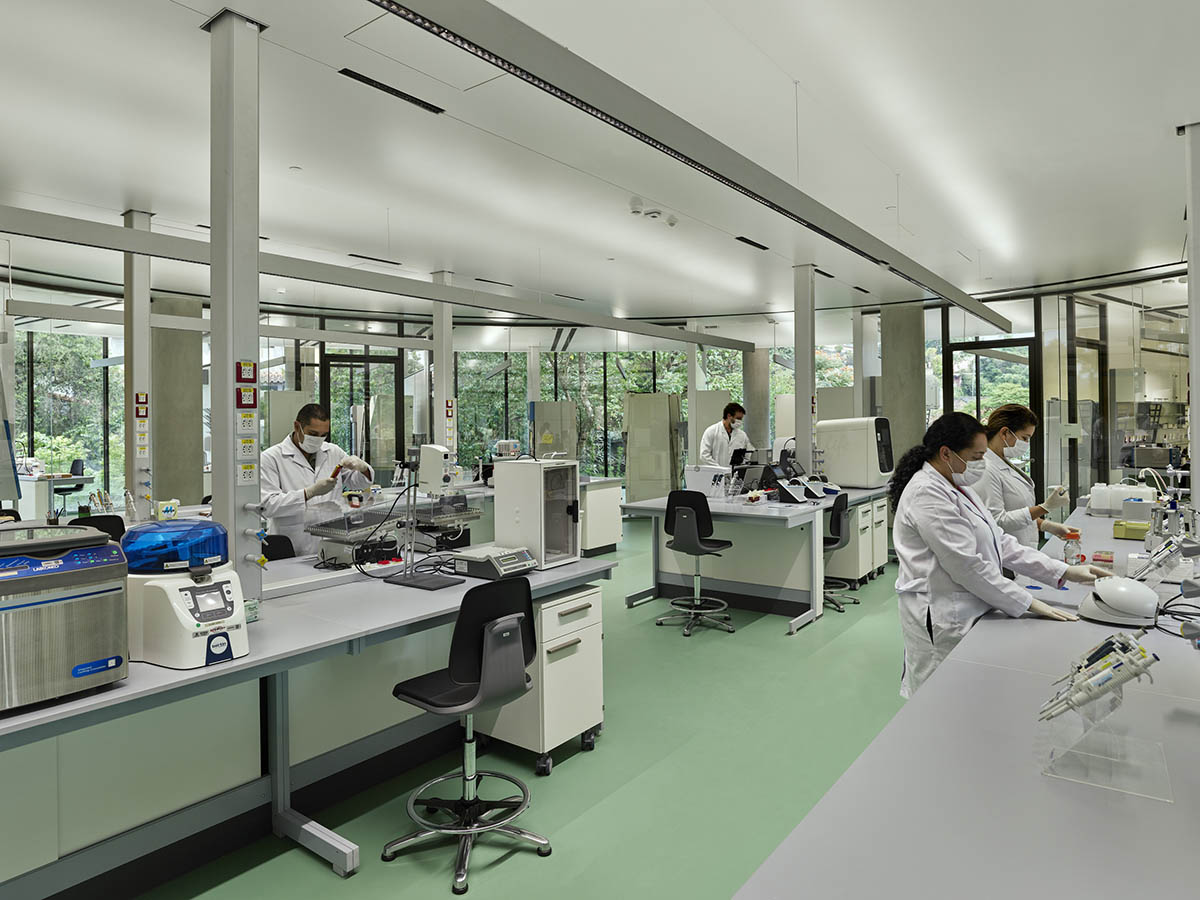
"The mechanical system was engineered to deliver cooling to the atrium only where required, at low level and at low velocity, to maximize comfort, control humidity and minimize energy usage," Safdie Architects explained.
"The environment was also designed to balance humidity levels in the building, to provide comfort, support plant needs, but also control humidity to meet strict laboratory environmental requirements," the studio added.
Besides all design and technical features, Brazilian artist Claudio Tozzi designed a colorful, four-story, glass tile mosaic mural for the project.
Sculptural benches commissioned for the Exhibition Space were designed and fabricated by Brazilian designer Guto Índio da Costa.
Safdie Architects assembled and led an international team of consultants, engineers, and contractors, in collaboration with Perkins+Will, who led the programming and interior planning of the classrooms and labs.
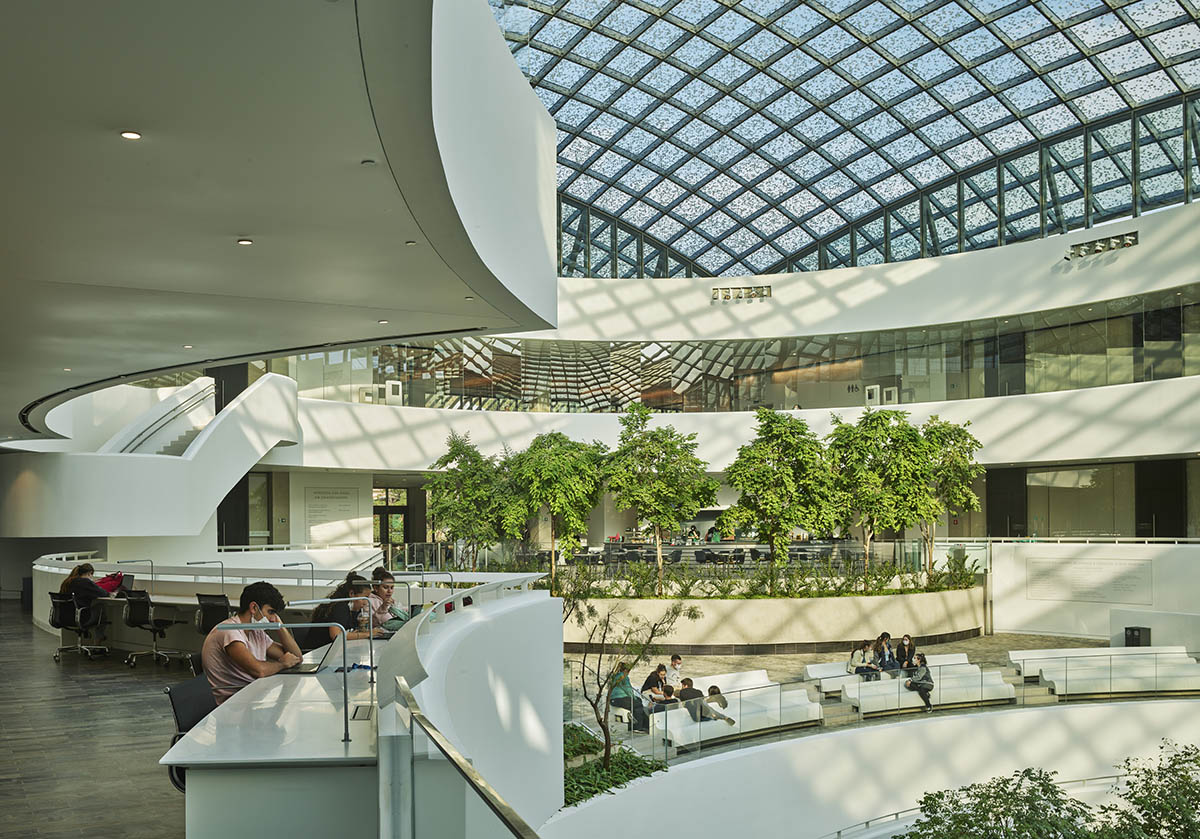
The main contractor, Racional Engenharia, was a key partner, leading the 36-month construction, which benefitted from a robust quality control program, managed between the client’s project manager Arcadis, executive architect Perkins+Will São Paulo, and Safdie Architects’ resident architect.
Construction of the project began in November 2017 and it will open to the public in August 2022.
Safdie Architects was established by Israeli-Canadian architect, urban designer, educator, theorist Moshe Safdie in 1964 to realize his Habitat 67 project, his visionary proposal for the World Expo in Montreal. The project was originally a Master's thesis of Safdie while studying at McGill University in 1961 and Habitat 67 paved the way for his international career.
Safdie Architects opened The Crystal Sky Bridge at Raffles City Chongqing, a 300-meter-long sky bridge connects the Raffles City Chongqing towers in Chongqing, China.
The firm is currently working on the expansion of the Crystal Bridges Museum of American Art in Bentonville, Arkansas and is designing a mixed-use towers with elevated bridges in downtown Toronto.
Project facts
Project name: Albert Einstein Education and Research Center (AEERC)
Architects: Safdie Architects
Location: São Paulo, Brazil.
Site Area: 12.000m2
Total Construction Area: 44,000m2
Design and Construction: 2016 - 2022
Groundbreaking: November 2017
Opening: August 2022
All images © Timothy Hursley. Courtesy of Safdie Architects, unless otherwise stated.
> via Safdie Architects
